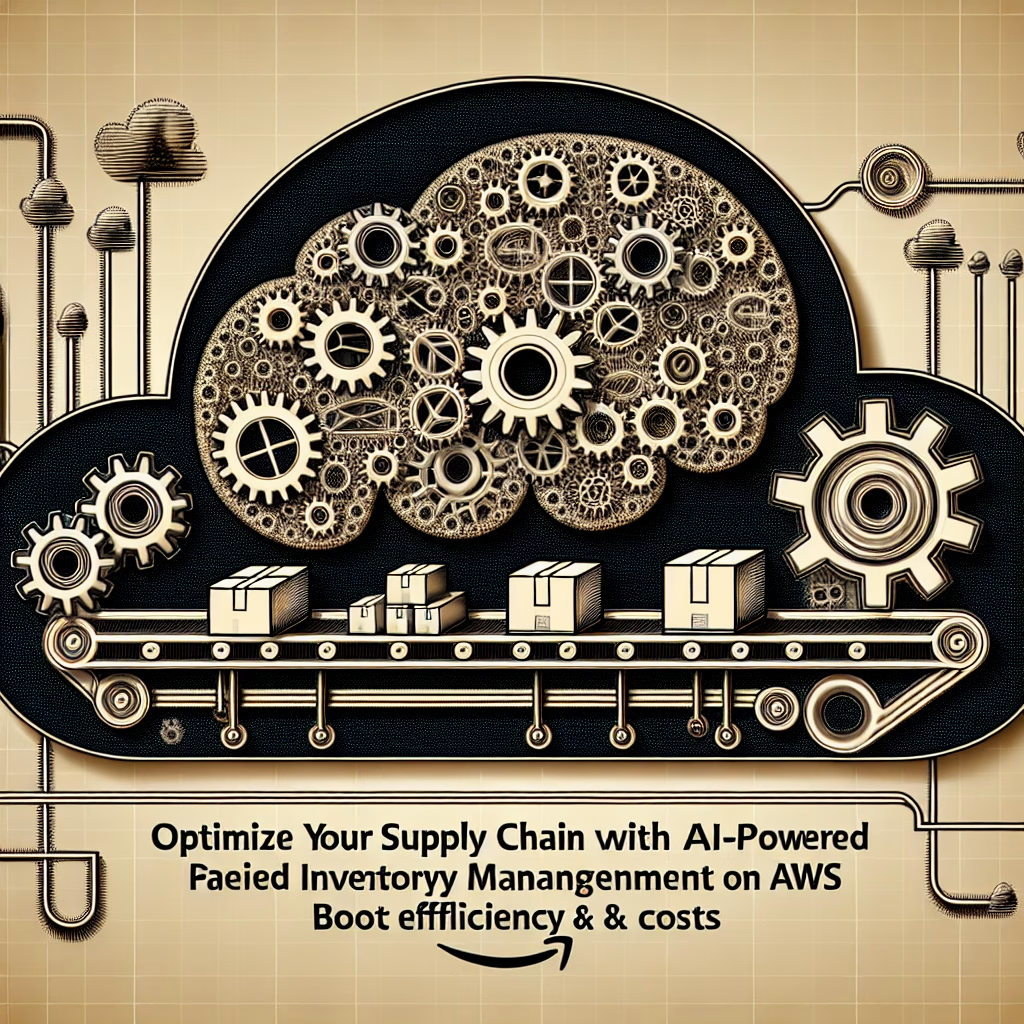AI-Powered Inventory Management on AWS
Summary:
AI-powered inventory management on AWS leverages machine learning (ML) and cloud computing to automate and optimize stock tracking, demand forecasting, and supply chain efficiency. Businesses of all sizes use AWS services like Amazon Forecast, SageMaker, and Lambda to reduce costs, minimize stockouts, and improve decision-making. This article explores how AWS’s AI tools transform traditional inventory systems by providing predictive analytics, real-time updates, and scalable solutions. Whether you’re a small retailer or a global enterprise, AI-driven inventory management on AWS can streamline operations and boost profitability.
What This Means for You:
- Efficiency Gains: AI-powered inventory systems on AWS automate manual processes, reducing human errors and freeing up time for strategic tasks. For example, AWS Forecast can predict demand with high accuracy, helping you optimize stock levels.
- Cost Savings: By preventing overstocking and understocking, AI-driven solutions minimize waste and storage costs. Use AWS analytics to identify slow-moving items and adjust procurement accordingly.
- Scalability: AWS AI services are built for growth, allowing businesses to expand without restructuring their inventory systems. Start with basic demand forecasting and integrate additional AWS tools as your needs evolve.
- Future Outlook or Warning: While AI-powered inventory management offers immense benefits, businesses must ensure data quality and invest in staff training. Without clean data and proper implementation, AI models may provide inaccurate predictions.
AI-Powered Inventory Management on AWS
AI-powered inventory management on AWS is transforming how businesses control stock levels, predict demand, and optimize supply chains. By integrating machine learning models with cloud infrastructure, AWS provides a scalable and cost-effective solution for modern inventory challenges.
How AI-Powered Inventory Management Works on AWS
AWS offers several services that facilitate AI-driven inventory management:
- Amazon Forecast: Uses time-series data to predict future product demand, helping businesses avoid stockouts or excess inventory.
- Amazon SageMaker: Enables custom ML model development for businesses with unique inventory needs.
- AWS Lambda: Automates workflows by triggering inventory adjustments based on real-time data.
Best Use Cases for AI in Inventory Management
AI-powered inventory management excels in scenarios requiring predictive analytics and automation:
- Retail & E-Commerce: Predict seasonal demand spikes and optimize stock allocation.
- Manufacturing: Streamline raw material procurement using real-time demand signals.
- Logistics: Automate warehouse restocking based on AI-driven forecasts.
Strengths of AI-Powered Inventory Management on AWS
- Cost Efficiency: Reduces excess stock costs and prevents shortages.
- Accuracy: Machine learning improves demand forecasting over traditional methods.
- Scalability: Cloud-based solutions grow with business needs.
Weaknesses and Limitations
- Data Dependency: AI models require high-quality historical data for accurate predictions.
- Implementation Complexity: Businesses may need AI expertise for optimal setup.
- Integration Challenges: Compatibility with legacy systems can be an issue.
How to Get Started
To implement AI-powered inventory management on AWS:
- Collect and clean historical inventory data.
- Choose the right AWS service (Forecast, SageMaker).
- Train and deploy ML models.
- Monitor performance and adjust as needed.
Conclusion
AI-powered inventory management on AWS offers a competitive edge by optimizing stock levels and reducing operational costs. While challenges exist, the benefits of automation, scalability, and predictive analytics make it a worthwhile investment for businesses seeking efficiency.
People Also Ask About:
- Is AI-powered inventory management suitable for small businesses?
Yes, AWS offers scalable solutions that can fit small businesses, allowing them to start with basic demand forecasting and expand as needed. - What type of data is needed for AI inventory predictions?
Historical sales data, inventory turnover rates, and seasonal trends are essential for accurate AI-driven forecasting. - How expensive is AI inventory management on AWS?
Costs vary based on usage, but AWS’s pay-as-you-go model makes it affordable for businesses of all sizes. - Can AI replace human inventory managers?
AI assists rather than replaces humans, providing data-driven insights while humans make strategic decisions.
Expert Opinion:
AI-powered inventory management on AWS is a game-changer for businesses, but success depends on accurate data and proper model training. While automation improves efficiency, human oversight remains crucial to handle exceptions. As AI models evolve, real-time analytics and adaptive learning will drive even greater inventory optimization. Businesses should stay updated with AWS’s latest AI features to maximize benefits.
Extra Information:
- Amazon Forecast Documentation: Learn how to implement demand forecasting with AWS.
- Amazon SageMaker Guide: Explore custom ML model development for inventory needs.
Related Key Terms:
- AWS machine learning for inventory optimization
- AI demand forecasting in cloud-based inventory systems
- Automated inventory tracking with Amazon Forecast
- Inventory management AI solutions on AWS
- Real-time stock prediction using AWS SageMaker
Check out our AI Model Comparison Tool here: AI Model Comparison Tool
*Featured image generated by Dall-E 3





